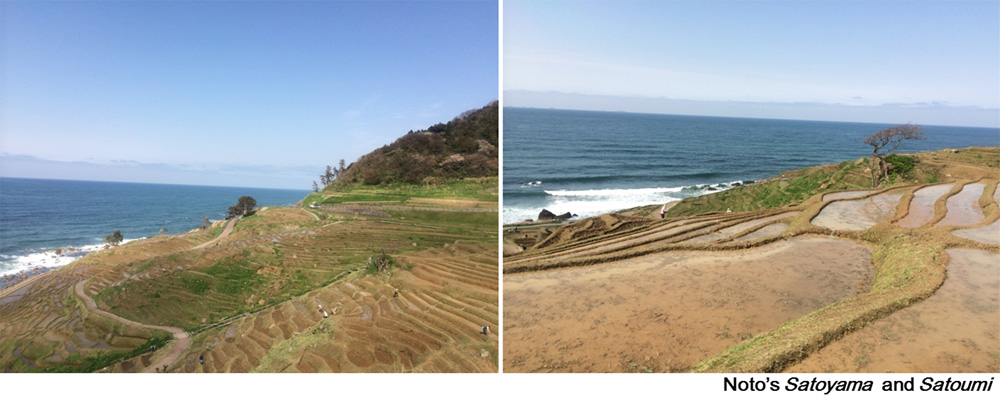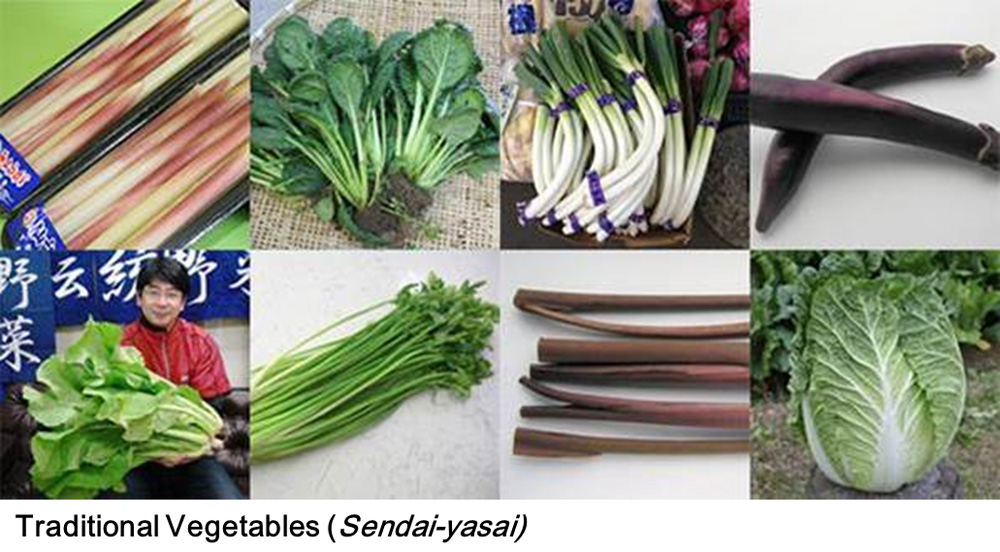Food and Biodiversity
- Ryo Kohsaka
- Associate Professor
Graduate School of Human and Socio-Environmental Studies, Kanazawa University
Preface
The traditional dietary culture of Japan known as Washoku, has been added to UNESCO’s Intangible Cultural Heritage list, and efforts to conserve and hand down traditional food culture are highlighted. Despite such calls for conservation and prestigious recognition, the traditional vegetables are marginalized and are struggling to survive in many farmlands in Japan. The trials to expand farmlands and production, and to resist the tide of large-scale profit seeking have been started on a national scale in order to conserve traditional vegetables by featuring regional characteristics or promoting their sales as high-value added products by highlighting their rarity.
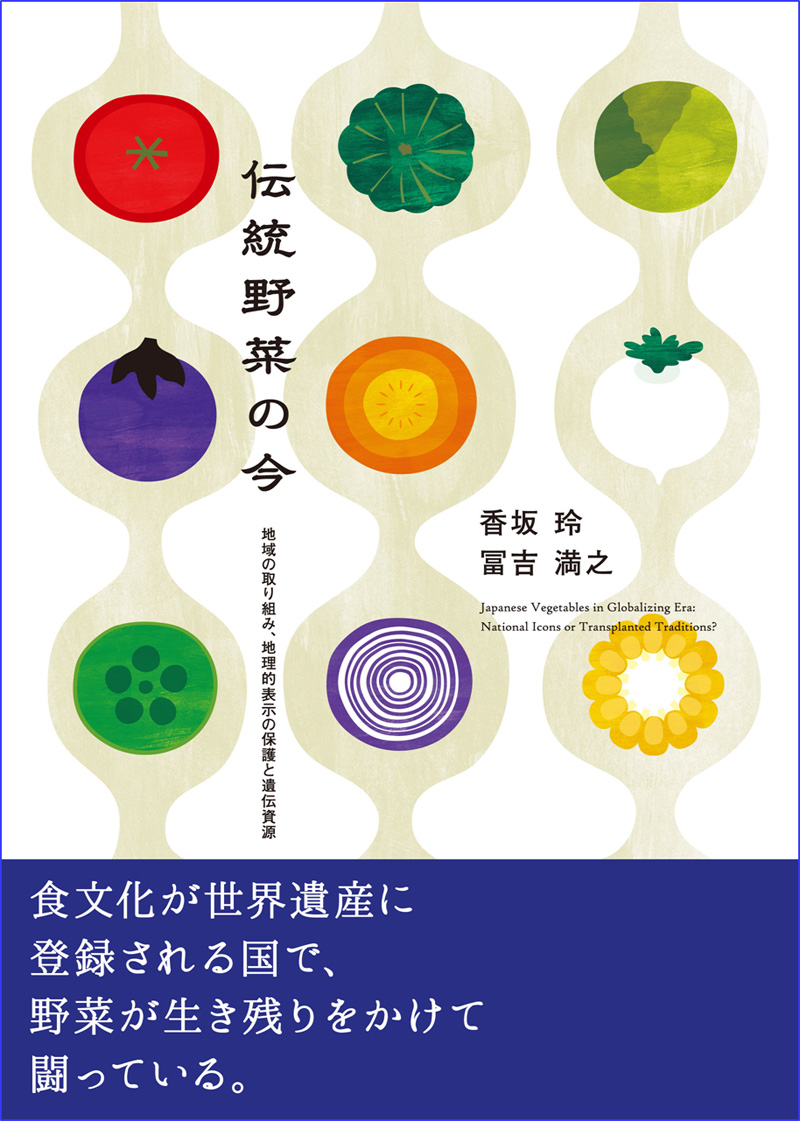 The distribution and consumption of most traditional vegetables which have sparsely been produced in local areas are limited except in the cases of nationally high-profile kyo-yasai (vegetables produced in Kyoto Prefecture) and kaga-yasai (vegetables produced in Ishikawa Prefecture). Also, the definition of traditional vegetables is completely vague. The origins of some vegetables are traceable back to the Middle Ages, and others are said to have been produced since World War II. “What traditional vegetables are” differs from region to region. However, the vagueness adversely enables diverse efforts, and therefore traditional vegetables have possibilities to be a savior for regional activation. Also, traditional vegetables which have been produced making use of regional characteristics are closely related to biodiversity. In July 2015, I wrote a book entitled “Dento-yasai no Ima (in Japanese, Japanese Vegetables in Globalizing Era: National Icons or Transplanted Traditions?) (Shimizukobundo).” I would like to introduce the outline of this book.
The distribution and consumption of most traditional vegetables which have sparsely been produced in local areas are limited except in the cases of nationally high-profile kyo-yasai (vegetables produced in Kyoto Prefecture) and kaga-yasai (vegetables produced in Ishikawa Prefecture). Also, the definition of traditional vegetables is completely vague. The origins of some vegetables are traceable back to the Middle Ages, and others are said to have been produced since World War II. “What traditional vegetables are” differs from region to region. However, the vagueness adversely enables diverse efforts, and therefore traditional vegetables have possibilities to be a savior for regional activation. Also, traditional vegetables which have been produced making use of regional characteristics are closely related to biodiversity. In July 2015, I wrote a book entitled “Dento-yasai no Ima (in Japanese, Japanese Vegetables in Globalizing Era: National Icons or Transplanted Traditions?) (Shimizukobundo).” I would like to introduce the outline of this book.
Washoku added to UNESCO’s Intangible Cultural Heritage List
Following the registration of Mt. Fuji on UNESCO’s Cultural Heritage Site in June 2013, washoku was registered as a UNESCO Intangible Cultural Heritage in December of the same year. This was big news, but the reasons why the Committee made this decision seem to be hardly known to people.
According to the proposal (nomination file) submitted to UNESCO, the reasons are described as follows.
The Japanese traditional dietary culture of the Japan or Washoku is social practice to foster familial and community cohesion based on the Japanese essential spirit of “respect for nature.” It is closely associated with annual events including New Year’s celebrations, rice planting or harvest festivals, and has characteristics such as “the use of fresh locally available ingredients” and “beautifully decorated dishes representing beauties of nature” according to the four seasons and geographical diversities in Japan.
As such, the positioning of Washoku in relation to the four seasons or nature, culture such as New Year’s Day, or community rituals are more emphasized in the proposal than the Japanese cuisine itself, the technique of layout or decoration, or the health effectiveness. Washoku was added to the UNESCO list since the values as culture have been nurtured in harmony with human activities, communities and nature in respective regional climates and landscapes. In fact, the reason for this registration is also related to the discussions why biodiversity is important. Biodiversity is not simple. It is more than just having diverse living things and involves inter-relationships among living things on earth and with human lives.
In the proposal, “who are the bearers and practitioners of Washoku” is also mentioned. The proposal indicates that “grassroots groups, schoolteachers, and cooking instructors also transmit the knowledge and skills to children and to younger generations by means of formal and non-formal education or providing experiences.” Strategically or insensibly, the bearers and practitioners are vaguely described here and both formal and non-formal parties are included. However, now washoku is formally registered and the obligation for preserving Washoku is imposed. Paradoxically, discussions about which seasons, regions and ranges are important for conserving and maintaining washoku are becoming more essential.
Not limited to UNESCO World Heritage, ranges of “vagueness” or “uncertainties” should be lessened as much as possible in the institutions, such as through the use of registered trademarks of regional brands or certificates of geographical origin. For example, certificates of geographical origin should be issued based on the registration of the products produced in definitely delineated geographical areas so that the products should be traceable. However, it is a fact that some try to ensure more participatory producers by obscuring areas, and others often fail to continue the institutions as the areas set by local governments or agricultural organizations are much wider than in reality. In regard to Japan’s “Act for Protection of Names of Designated Agricultural, Forestry and Fishery Products and Foodstuffs (Geographical Indication (GI) Act)” which entered into force in June 2015, the possibilities of registration in specific fields such as quality, production methods, and opportunities including festivals have been discussed. It would be desirable for the parties to draw lines of registration based on objectively measureable components, but it is questionable whether lines of registration could be drawn regarding the areas, production methods, tastes and quality of traditional vegetables. It would be necessary for the parties to take the vagueness necessarily arising from origins and realities of traditional vegetables into consideration.
Future of Traditional Vegetables
Besides UNESCO World Heritage, Globally Important Agricultural Heritage Systems(GIAHS)was established by the Food and Agriculture Organization (FAO) in order to conserve traditional agricultural methods and culture in rural villages that are environmentally friendly and biodiversity-conscious. When the Noto peninsula’s Satoyama and Satoumi were designated as GIAHS in 2011, many became more vociferous in their demands for preparedness and measures to firmly bequeath the areas as a heritage, even if in a small way. People including the media tend to set “registration” as a goal, but we should not forget that heritages will be achieved by day-to-day efforts after registration.
Tradition
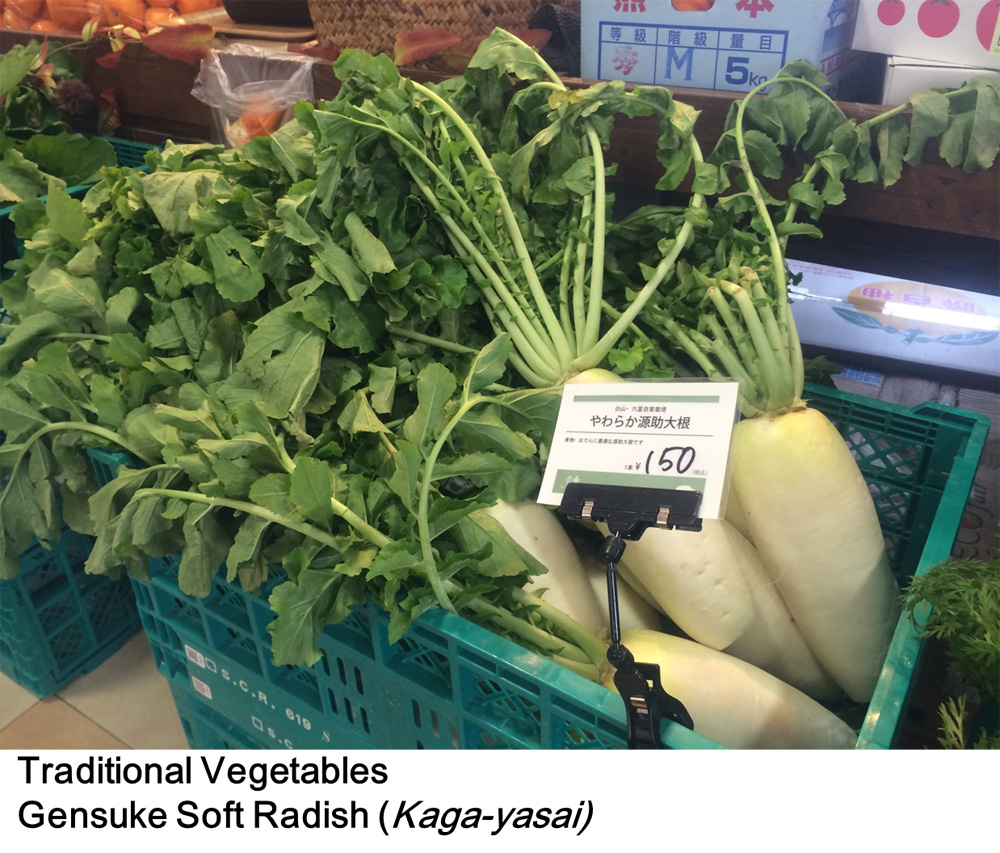 Why do people focus on traditional vegetables now? This may be due to reactions and anxiety regarding the mass production of agricultural products or globalization. When high-value added special products become ordinary commodities, this change is called “commoditization.” People are not satisfied only with mass produced “commoditized” vegetables, and now expect traditional vegetables to have characteristics and stories. Traditional vegetables may have an aspect to be spotlighted as they remind us of our pride and appeal to our emotions along with UNESCO World Heritage registration.
Why do people focus on traditional vegetables now? This may be due to reactions and anxiety regarding the mass production of agricultural products or globalization. When high-value added special products become ordinary commodities, this change is called “commoditization.” People are not satisfied only with mass produced “commoditized” vegetables, and now expect traditional vegetables to have characteristics and stories. Traditional vegetables may have an aspect to be spotlighted as they remind us of our pride and appeal to our emotions along with UNESCO World Heritage registration.
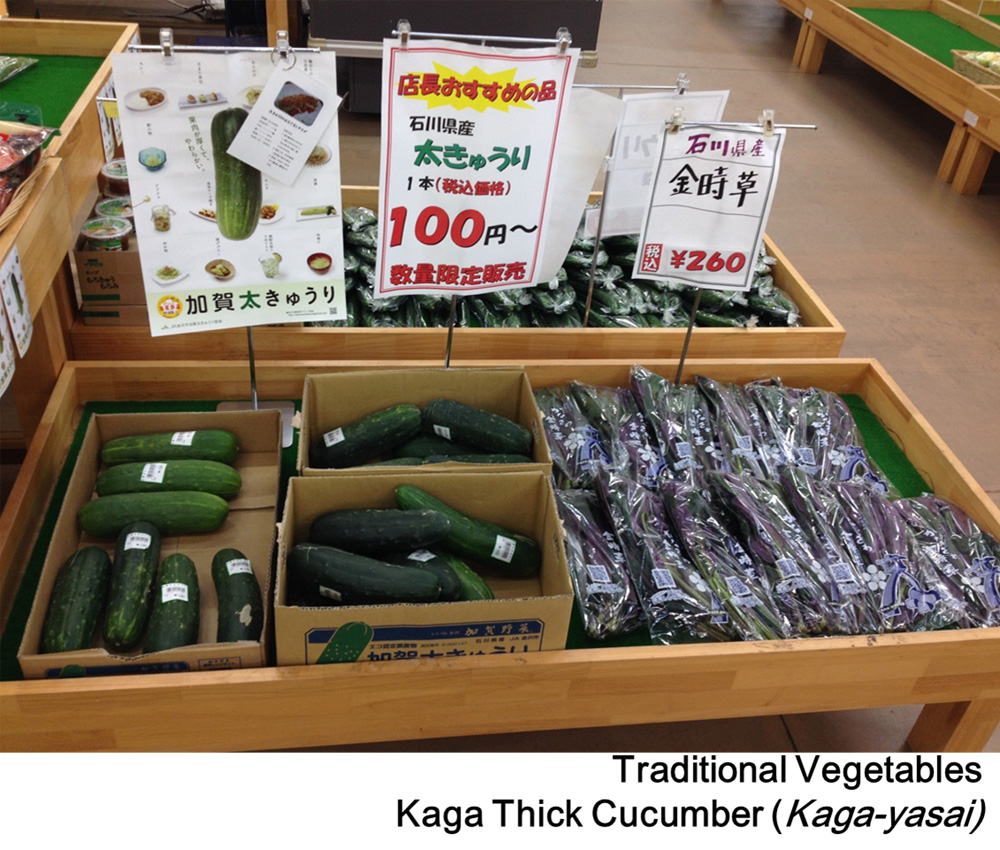 Regarding the discussions about biodiversity, aside from the aspect as goods, close attention has been paid to the aspect as genetic resources of agricultural products including traditional vegetables. Heated discussions about the sharing of benefits arising from genetic resources have developed among countries. But on the other hand, a “Noah’s Ark” project has been progressed aiming at preserving seeds collected from all over the world in a storage building located in the Arctic in anticipation of plant diseases and climate change.
Regarding the discussions about biodiversity, aside from the aspect as goods, close attention has been paid to the aspect as genetic resources of agricultural products including traditional vegetables. Heated discussions about the sharing of benefits arising from genetic resources have developed among countries. But on the other hand, a “Noah’s Ark” project has been progressed aiming at preserving seeds collected from all over the world in a storage building located in the Arctic in anticipation of plant diseases and climate change.
Also, projects to authorize indigenous varieties and regional characteristic processed foods as “Taste’s Ark” and to conserve regional food diversity have been internationally developed in order to prevent those foods from being swallowed up by the waves of mass products. As of 2014, 32 foods are authorized in Japan.
These are a series of movements against globalization or standardization, and at the same time, they are linked to the conservation of biodiversity.
Traditional Vegetables not as a Place to Belong To but as a Place to Ask Ourselves
At the places where traditional vegetables are actually sold, the frame of “traditional vegetables” seems to be intentionally created in order to satisfy people’s expectations requesting some kinds of stories or feelings of nostalgia. Of course, there are a lot of cases of trying hard to hand over regional traditional vegetables with responsibility, not in order to obtain some profit or to own authority. However, some people are looking for, producing or selling traditional vegetables in a narrative fashion, and commercially charged cases have successively occurred. It is also predicted that disputes or skirmishes about “which is the genuine traditional vegetable?” might begin in earnest.
However, the most important thing is not to ask what is genuine or fake. The point is why Japanese consumers expect narratives to that extent. The word “traditional” may remind us of the adoration that we could realize something “somewhere in the future.” We have had a busy run up to here and therefore hope to be free from chaos where we are “here and now.” Then the expectations for traditional vegetables with regionality and background stories have been raised, and their popularity seemed to be enhanced. However, the reality of traditional vegetables is not as idyllic as expected from the sound of the words. Now it becomes possible to aim at selling traditional vegetables to the wealthy class in urban areas in addition to the conventional captive consumption for future generations. In extreme cases, it will also be possible to globally trade traditional vegetables through free trade.
The questions we should pose through traditional vegetables are not to know whether they are genuine or not or how the consumption should be. What we should ask ourselves is to know why traditional vegetables are important for us, and what types of agriculture and societies we would like to aim for. We are standing at a crossroad not only in thinking about traditional vegetables from the viewpoint of consumption but also in thinking about our own values and whether we can break away from them.
References
Takuya Yoshimi, “3.11 ni Towarete – Hitobito no Keiken wo Meguru Kosatsu (in Japanese, Questions surrounding 11 March: Consideration about the Experiences of People)” (Iwanami Shoten)
Takashi Usui and Ashita Matsumiya, “Shoku to Noh no Community ron (in Japanese, Communitology on Food and Agriculture)” (2013, Sogensha Inc.)
Profile of Ryo Kohsaka
Dr. Ryo Kohsaka was born in Shizuoka Prefecture, Japan. He completed a Bachelor’s degree in Rural Development at the Faculty of Agriculture, University of Tokyo, Japan. After he graduated from the University of Tokyo, he served as Project Officer at the Regional Environmental Centre for Central and Eastern Europe (REC) in Szentendre, Hungary. In 2000, he was honored as a Life Fellow of REC. He finished his Master degree in Environment and Development at the University of East Anglia, United Kingdom in 2000, and earned his PhD. degree in Forestry Economics, Freiburg University, Germany in 2004. After he worked for the Secretariat of the Convention on Biological Diversity, Montréal, Canada from 2006 to 2008, he served as Associate Professor at the Graduate School of Economics, Nagoya City University from 2008 to 2012. Now, he serves as Associate Professor at the Graduate School of Human and Socio- Environmental Studies, Kanazawa University, Japan.
Dr. Kohsaka’s recent books include: “Chiiki Saisei, Gyakkyo kara Umareru Aratana Kokoromi” (Local Regeneration, New Trials born from Adversity) (Iwanami Booklet, Iwanami Shoten Publishers, in Japanese), “Seibutsutayousei to Watashitachi, COP10 kara mirai e” (Biodiversity and us – from COP10 to the Future) (Iwanami Junior Shinsho, Iwanami Shoten Publishers, in Japanese) and “Shitte okitai Chitekizaisan Katsuyojyutsu, Chiiki ga Ikinokorutameno Chie to Kuhu” (Application of Intellectual Property We Should Know, Knowledge and Innovation for Local Survival) (Gyosei Corporation, in Japanese).
Dr. Kohsaka also served as Advisor to the COP10 Support Committee from 2008 to 2010. In 2010, he attended the International Youth Congress supported by the AEON Environmental Foundation that youths from more than 50 countries joined. He has made great contributions to the evaluation of satoyama as a Visiting Fellow of the United Nations University.







